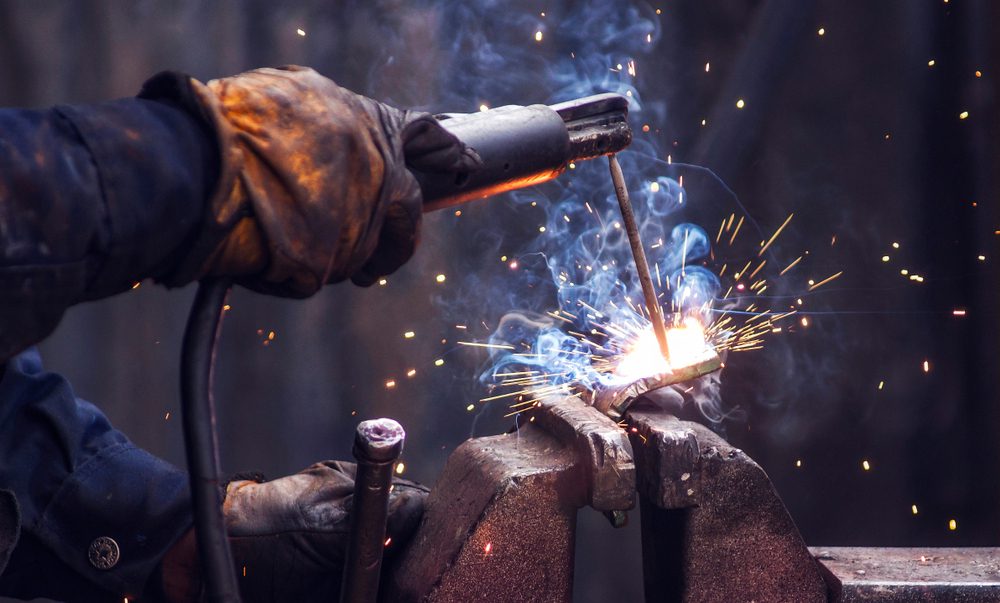Science
Elevate Your Welding Precision with Essential Positioners

Welding operations rely heavily on precision, safety, and efficiency. One critical tool that enhances these aspects is the welding positioner, which allows for easy repositioning of workpieces, ensuring accuracy during welding. This article explores the various types of welding positioners, their features, benefits, and maintenance tips, underscoring their importance in modern welding practices.
Understanding Welding Positioners
A welding positioner is a device designed to securely hold and rotate weldments into the optimal position for welding. By attaching the workpiece to a rotating table, operators can access different angles without needing to manually reposition themselves or the workpiece. This not only improves weld quality but is particularly beneficial for continuous welding tasks on circular or complex shapes.
Welding positioners come in various designs to cater to different workpiece sizes and functions. The most common types include:
– **Benchtop positioners**: These are compact and lightweight, ideal for intricate tasks in confined spaces. They are often mounted to workbenches and are versatile enough for various workshop applications.
– **Floor-mounted positioners**: Larger and more robust, these positioners are designed for medium to heavy workloads. They often feature swivel and tilt capabilities, making them suitable for a range of industrial tasks.
– **Tailstock and headstock positioners**: Specifically designed for handling long workpieces like pipes and plates, these units use a tailstock and powered headstock to facilitate rotation.
– **Turntables**: Serving as simple rotary positioners, turntables rotate on a single horizontal axis, making them effective for basic welding tasks.
– **Tilt-rotate positioners**: These are among the most flexible, allowing for downhand welding positions that enhance convenience and efficiency for the operator.
Evaluating Performance Features
When selecting a welding positioner, several performance features should be considered to ensure it meets specific operational requirements:
– **Load Capacity**: This refers to the maximum weight the positioner can safely handle. It’s crucial to choose models that exceed the weight of the heaviest workpieces.
– **Rotation Speed**: The workpiece RPM is vital, and a variable speed control system is essential for adjusting the speed according to welding needs.
– **Tilt Range**: The angle to which the worktable can be tilted allows for enhanced flexibility in positioning.
– **Table Size**: The diameter of the rotating table must be adequate to accommodate typical workpieces.
– **Control System**: This can range from basic foot pedals for start/stop functions to advanced programmable logic controllers (PLCs) capable of automating complex welding patterns.
Integrating a rotary welding positioner into a workflow can significantly enhance operational efficiency. By reducing the need for manual handling of heavy or awkward workpieces, a single operator can adjust the position with minimal effort, resulting in productivity increases of up to **40%**. Furthermore, maintaining the weld in a downhand position contributes to higher task completion rates and improves overall accuracy, leading to better weld quality with fewer defects.
The ergonomic benefits of using welding positioners cannot be overstated. Heavy workpieces can pose risks to operators, leading to physical strain and potential injuries. By minimizing the need for manual lifting and turning, positioners not only enhance safety but also reduce operator fatigue, allowing for greater focus and fewer errors on the job site.
Choosing the Right Welding Positioner
Selecting the appropriate welding positioner is essential to maximizing its advantages. Operators should consider specific factors before making a decision:
– **Specifications of the Workpiece**: Ensure that the workpiece meets criteria regarding size, weight, and geometry to comfortably fit on the positioner.
– **Purpose**: Determine whether the welding tasks are straightforward circumferential welds or require more complex multi-axis processing, which may necessitate a more advanced positioner.
– **Level of Automation**: Assess whether the operation can function with manual handling or if a fully automated setup is required due to high production demands.
– **Space Consideration**: Evaluate if the workspace can accommodate the positioner’s size and the movement required during operations.
While manual positioning techniques may seem cost-effective, they often lead to inefficiencies and increased risks. In contrast, rotary positioners offer sophisticated automation that enhances productivity, reduces labor expenses, and improves safety.
Maintaining Your Welding Positioner
Proper maintenance is vital for ensuring the longevity and safe operation of welding positioners. Regularly integrating maintenance tasks into a preventative program can prevent costly repairs. Key maintenance practices include:
– **Daily Checks**: Inspect for loose hardware, damaged wires, and wear. Clean surfaces to prevent dust and spatter accumulation.
– **Weekly Maintenance**: Lubricate operational components like gears and bearings following the manufacturer’s guidelines.
– **Monthly Inspections**: Tighten connections and terminals, checking for signs of corrosion or wear, and ensure all control systems operate correctly.
– **Annual Professional Assessment**: Contract a technician to examine the motor, gearbox, and control electronics for any faults and maintain a record of service.
Common issues such as jerky rotation or inaccurate speed control can often be traced back to worn components or insufficient lubrication. Addressing these promptly can prevent more significant problems.
Investing in a welding positioner is no longer seen as a luxury but rather a necessity in contemporary welding operations. A reliable positioner not only enhances weld quality and operator safety but also minimizes downtime and rework, ultimately leading to increased profitability. With the right choice, a welding positioner can provide lasting operational benefits and adapt to future projects.
-

 World2 days ago
World2 days agoCoronation Street’s Shocking Murder Twist Reveals Family Secrets
-

 Entertainment4 months ago
Entertainment4 months agoKate Garraway Sells £2 Million Home Amid Financial Struggles
-

 Entertainment3 months ago
Entertainment3 months agoAnn Ming Reflects on ITV’s ‘I Fought the Law’ Drama
-

 Health3 months ago
Health3 months agoKatie Price Faces New Health Concerns After Cancer Symptoms Resurface
-

 Entertainment3 weeks ago
Entertainment3 weeks agoCoronation Street Fans React as Todd Faces Heartbreaking Choice
-

 World3 weeks ago
World3 weeks agoBailey Announces Heartbreaking Split from Rebecca After Reunion
-

 World5 days ago
World5 days agoKevin Sinfield Exceeds Fundraising Goal Ahead of Final Marathons
-

 Entertainment3 months ago
Entertainment3 months agoCoronation Street’s Carl Webster Faces Trouble with New Affairs
-

 Entertainment4 days ago
Entertainment4 days agoTwo Stars Evicted from I’m A Celebrity Just Days Before Finale
-

 Entertainment3 months ago
Entertainment3 months agoWhere is Tinder Swindler Simon Leviev? Latest Updates Revealed
-

 Entertainment4 months ago
Entertainment4 months agoMarkiplier Addresses AI Controversy During Livestream Response
-

 Science2 months ago
Science2 months agoBrian Cox Addresses Claims of Alien Probe in 3I/ATLAS Discovery









